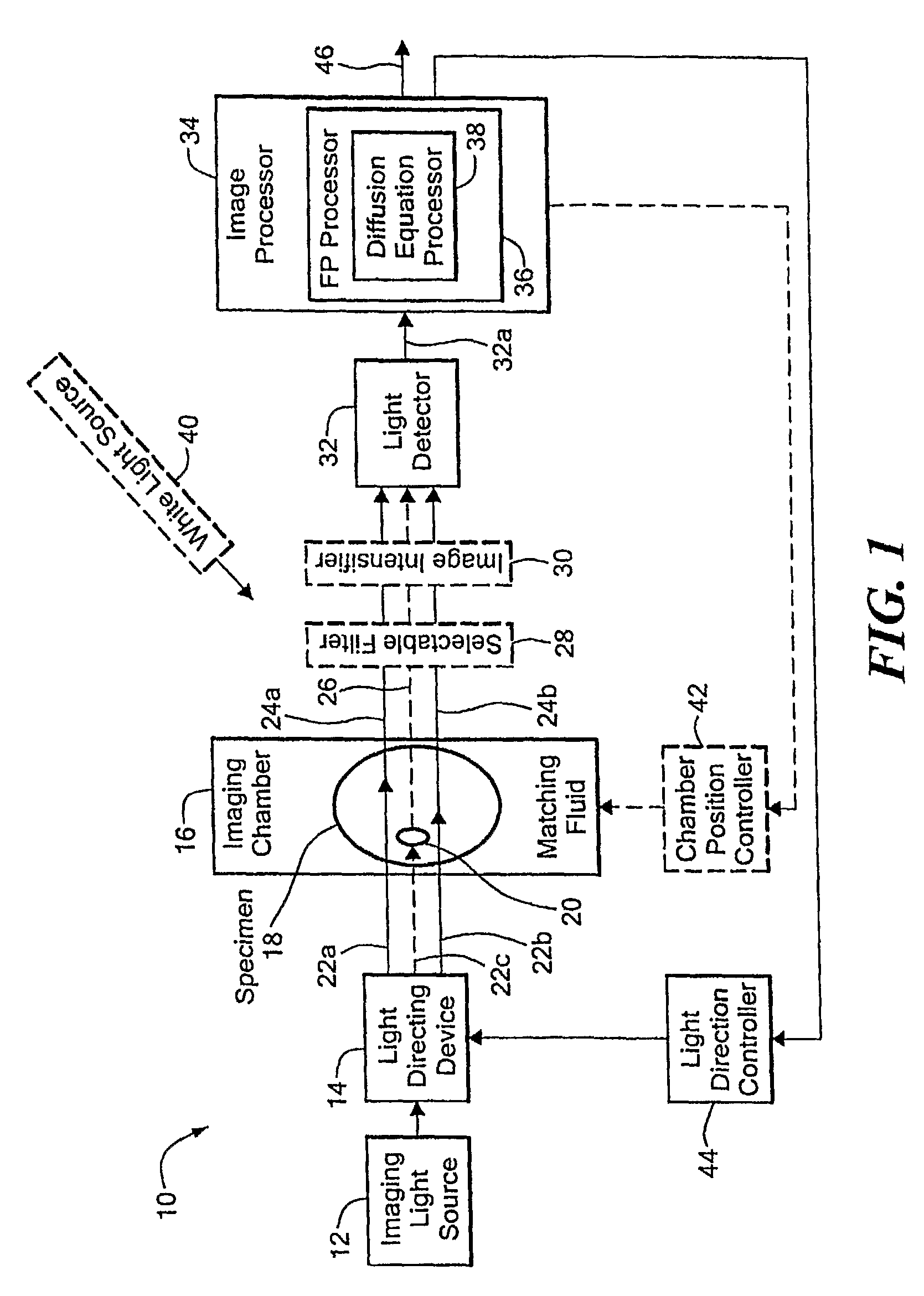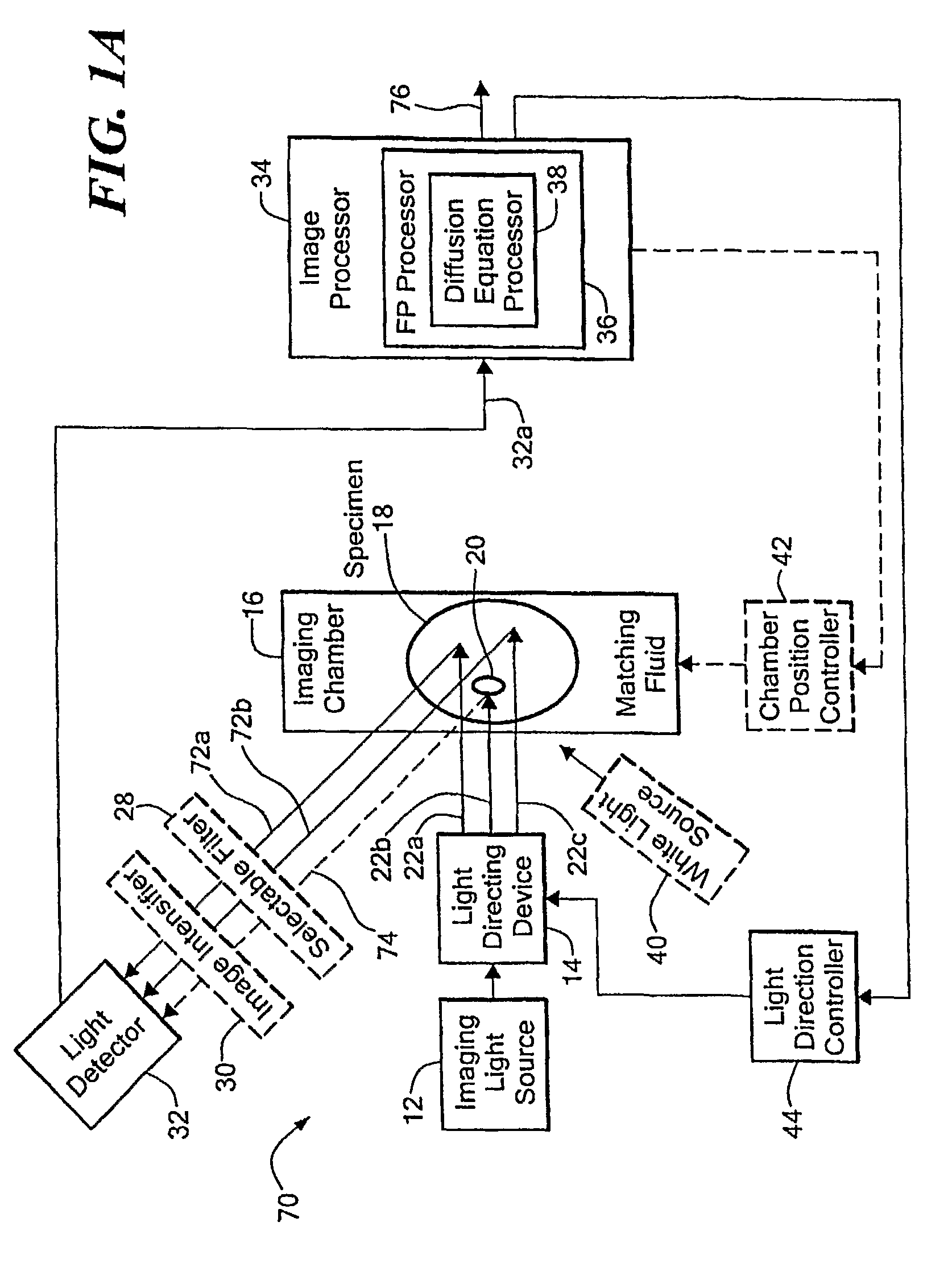Method and system for tomographic imaging using fluorescent proteins
a technology of fluorescent proteins and tomography, applied in the field of optical tomography, can solve the problems of ineffective microscopy at the deeper imaging depth, inability to detect light,
- Summary
- Abstract
- Description
- Claims
- Application Information
AI Technical Summary
Benefits of technology
Problems solved by technology
Method used
Image
Examples
Embodiment Construction
[0036]Before describing the imaging method and system, some introductory concepts and terminology are explained. As used herein, a “phantom” refers to a test object being imaged. A phantom is typically a manufactured article having diffuse light propagation characteristics similar to living tissue, for example, a piece of plastic. For another example, a phantom can be a vial having cells expressing the fluorescent proteins therein, i.e. a fluorescent marker.
[0037]As used herein, the term “apparent light sources” is used to describe projections of a single light source to a plurality of physical positions or angles, each providing an apparent light source.
[0038]As used herein, the term “excitation” light is used to describe light generated by an excitation light source, (for example, an apparent light source) that travels toward a specimen to be imaged, before entering the specimen. Once in the specimen, the light is referred to herein as “intrinsic” light. The intrinsic light is sub...
PUM
| Property | Measurement | Unit |
|---|---|---|
| visible wavelength | aaaaa | aaaaa |
| distance | aaaaa | aaaaa |
| depth | aaaaa | aaaaa |
Abstract
Description
Claims
Application Information
 Login to View More
Login to View More - R&D
- Intellectual Property
- Life Sciences
- Materials
- Tech Scout
- Unparalleled Data Quality
- Higher Quality Content
- 60% Fewer Hallucinations
Browse by: Latest US Patents, China's latest patents, Technical Efficacy Thesaurus, Application Domain, Technology Topic, Popular Technical Reports.
© 2025 PatSnap. All rights reserved.Legal|Privacy policy|Modern Slavery Act Transparency Statement|Sitemap|About US| Contact US: help@patsnap.com



